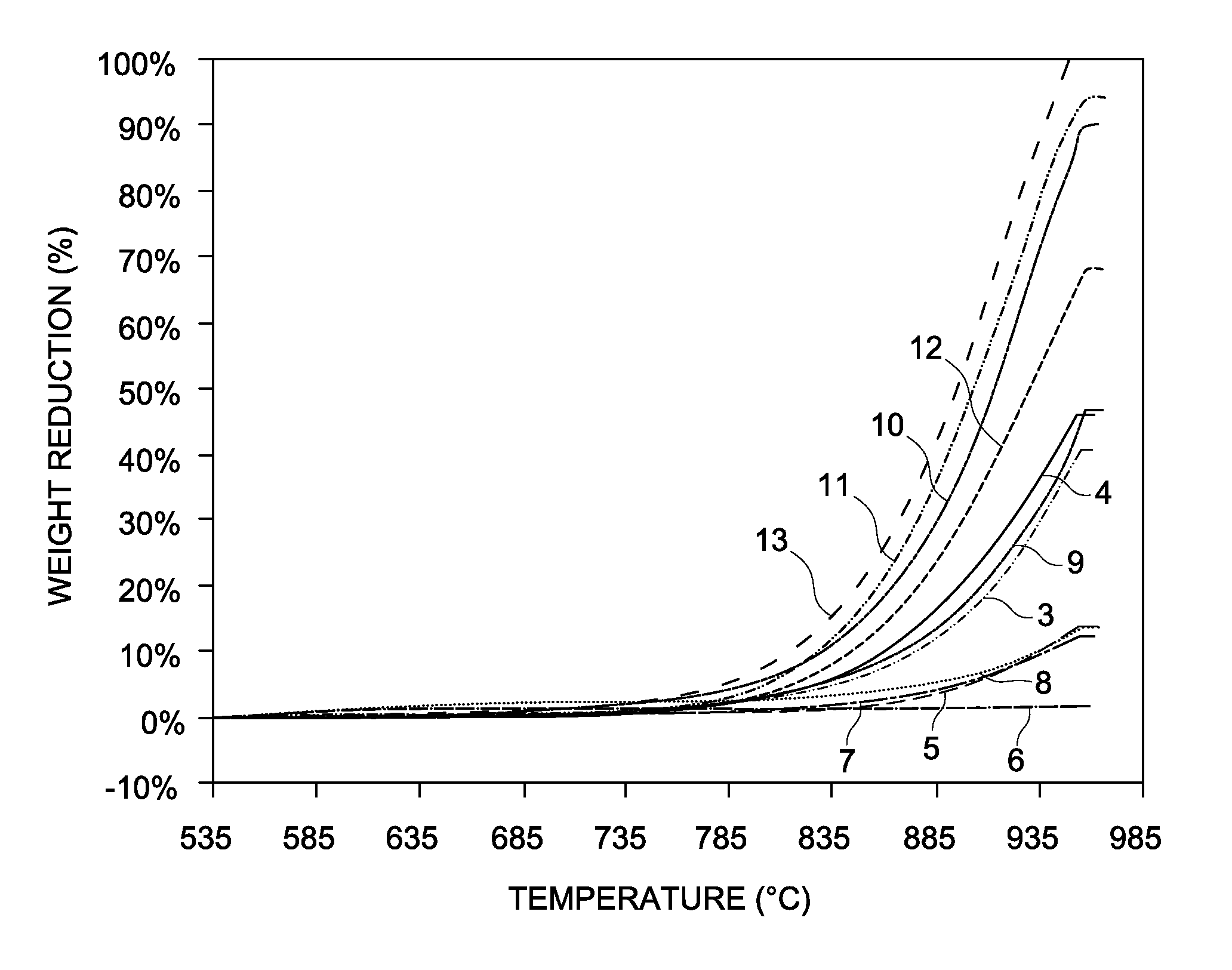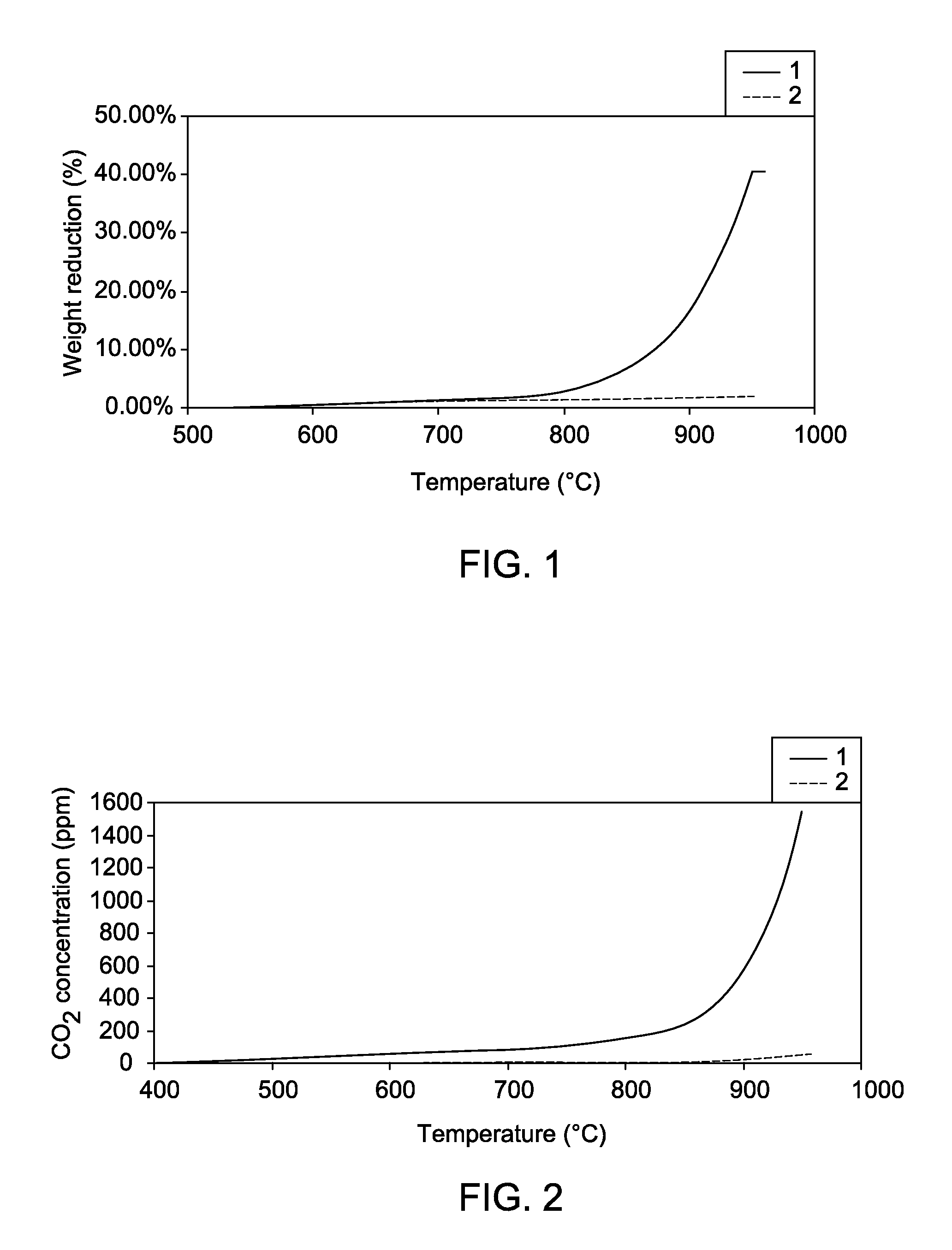Method and reactor for cracking hydrocarbon
a hydrocarbon and reactor technology, applied in the direction of hydrocarbon by hydrocarbon cracking, chemical/physical/physical-chemical stationary reactors, metal/metal-oxide/metal-hydroxide catalysts, etc., can solve the problems of deteriorating mechanical properties, production loss, and adverse effects of coal build-up on the physical characteristics of the reactor components
- Summary
- Abstract
- Description
- Claims
- Application Information
AI Technical Summary
Benefits of technology
Problems solved by technology
Method used
Image
Examples
examples
[0029]The following examples are included to provide additional guidance to those of ordinary skill in the art in practicing the claimed invention. Accordingly, these examples do not limit the invention as defined in the appended claims.
[0030]A lab scale hydrocarbon-cracking furnace was built up. Due to structure similarity of naphtha, heptane was used as the source of hydrocarbon.
[0031]Samples on quartz sample holders were placed at the constant temperature region of the cracking furnace. The furnace door was then closed. Argon gas was fed in the furnace at the flow rate of 100 standard cubic centimeter per minute (sccm). The cracking furnace was heated to 880° C. with the ramping rate of 20° C. / min. A vaporizer was heated to 350° C. within 30 minutes.
[0032]When the temperature of the cracking furnace reached 880° C. and the temperature of the vaporizer reached 350° C., water was pumped using a piston pump into the vaporizer with the flow rate of 1.58 ml / min. Argon gas feeding was ...
example 1
[0036]The perovskite materials were prepared by solid state reaction method. Using BaZr0.3Ce0.5Y0.2O3 as an example, stoichiometric amounts of high-purity barium carbonate, zirconium oxide, cerium oxide, and yttrium oxide powders (all from sinopharm chemical reagent Co., Ltd. (SCRC), Shanghai, China) were mixed in ethanol and ball-milled for 12 hours. The resultant mixtures were then dried and calcined at 1100° C. in air for 6 hours to form the perovskite powder. The powder was iso-statically pressed at 274.6 MPa for 10 minutes to become a disk. The disk was then sintered at 1400° C. for 6 hours in air. The sintered disk was polished to have a thickness of 1 mm. The perovskite phase was confirmed using an X-ray diffractometer (D8 Advance, Bruker AXS GmbH, Karlsruhe, Germany).
example 2
[0037]Disks made from SrCeO3, SrZr0.7Ce0.7O3, BaMnO3, BaCeO3, BaZr0.3Ce0.7O3, and Al2O3 and having a thickness of 1 mm and a diameter of 10 mm were used as samples and stayed in the cracking furnace at 800° C.+ / −5° C. for 2 hours. No coke depositions were observed on surfaces of the SrCeO3 disk, the SrZr0.3Ce0.7O3 disk, the BaMnO3 disk, the BaCeO3 disk, and the BaZr0.3Ce0.7O3 disk while the coke deposition was observed on the Al2O3 disk.
[0038]The X-ray Diffraction (XRD) results of the BaZr0.3Ce0.7O3 disk before and after the experiment demonstrate that this material is rather stable in the experiment.
PUM
| Property | Measurement | Unit |
|---|---|---|
| temperature | aaaaa | aaaaa |
| temperature | aaaaa | aaaaa |
| temperature | aaaaa | aaaaa |
Abstract
Description
Claims
Application Information
 Login to View More
Login to View More - R&D
- Intellectual Property
- Life Sciences
- Materials
- Tech Scout
- Unparalleled Data Quality
- Higher Quality Content
- 60% Fewer Hallucinations
Browse by: Latest US Patents, China's latest patents, Technical Efficacy Thesaurus, Application Domain, Technology Topic, Popular Technical Reports.
© 2025 PatSnap. All rights reserved.Legal|Privacy policy|Modern Slavery Act Transparency Statement|Sitemap|About US| Contact US: help@patsnap.com



